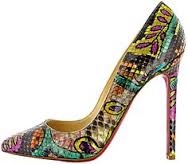Copyright © Françoise Herrmann
 Among the three contenders for a 2016 European Patent award, in the Small & Medium-sized Enterprises (SMEs) category, you will find Dr. Helen Lee, haematologist, Founder & CEO of the European-based and Sunnyvale (California)-based Diagnostics for the real world (DRW) company, and also founder of the Diagnostics Development Unit (DDU) at the Department of Haematology, School of Medicine, of Cambridge University, in the UK.
Among the three contenders for a 2016 European Patent award, in the Small & Medium-sized Enterprises (SMEs) category, you will find Dr. Helen Lee, haematologist, Founder & CEO of the European-based and Sunnyvale (California)-based Diagnostics for the real world (DRW) company, and also founder of the Diagnostics Development Unit (DDU) at the Department of Haematology, School of Medicine, of Cambridge University, in the UK.
DDU and DWR are respectively in charge of the research and marketing of highly sensitive and innovative tests for point-of-care diagnostics of infectious diseases in resource-limited settings of the developing world, and otherwise of more general interest to point-of-care diagnostics settings of the developed world.
In particular, the tests and platforms currently developed target HIV detection and the monitoring of viral loads for patients receiving antiretroviral therapies, two STDs (Sexually Transmitted Diseases) chlamydia and gonorrhea, hepatitis B, and more recently the two most severe types of Influenza (Types A and B). However, in theory, as long as the target nucleic acid sequence is known for a particular infectious disease, a test can be developed to detect and capture it, using the DDU-DWR invention processes and devices.
 |
| © Cambridge U. crest |
DDU has filed 12 families of patents in connection with the tests and the two platforms allowing for point-of-care diagnostics: the SAS (Signal Amplification System) for protein targets, and the SAMBA (Simple Amplification-Based Assay) for nucleic acid targets. Twenty patents to date have been granted.
EP1301627 titled Improved detection signal and capture in dipstick assays, for example, covers the improved detection of a target nucleic acid (e.g.; HIV RNA) which, contrary to conventional (costly and time –consuming) methods of amplification using Polymerase Chain Reaction (PCR), enables detection of an unamplified target nucleic acid directly on the dipstick using special DNA capture and detection probes, which will hybridise with any target nucleic acid (e.g. HIV RNA) that is present in the sample solution
EP1301628 titled Improved capture and detection of target nucleic acid in dipstick assays, for example, further describes helper probes designed to facilitate hybridization of the capture and /or detection probe capable of hybridising to the targeted nucleic acid.
The advantages of the DRW-DDU point-of-diagnostics tests and platforms are severalfold. Results are obtained swiftly allowing for the immediate treatment of patients unlikely, or unable, to easily return. The tests do not require the use of expensive apparatus and reagents or highly trained technicians to operate and manipulate them. The tests and platforms are heat and humidity resistant, which makes it possible to use the systems, for example, in high-temperature and humidity sub-Saharan countries.
Finally, and perhaps most importantly, since the tests rely on the detection of target nucleic acid vs. the presence of antibodies, appearing at a later stage of an infection, these are far more sensitive tests. This is particularly advantageous for testing newborns, for example, whose infectious diseases might thus be detected prior to the formation of antibodies, or for monitoring the viral loads of patients treated with antiretroviral drugs which, under the most favorable outcomes, are almost undetectable.
Below, the abstract for EP1301628 titled Improved capture and detection of target nucleic acid in dipstick assays.
Use of helper probes in dipstick assays is described. In a dipstick assay to test for the presence of a target nucleic acid in a sample solution, the sample solution is connected with the contact end of the dipstick to cause the sample solution is contacted with the contact end of the dipstick to cause the sample solution to move by capillary action to a capture zone of the dipstick at which target nucleic acid is captured. The target nucleic acid may be captured at the capture zone by a capture probe capable of hybridising to the target nucleic acid. A labelled detection probe capable of hybridising to the target nucleic acid may be used to detect the target nucleic acid at the capture zone. A helper probe may be used to enhance the binding of the capture and/or detection probe to the target nucleic acid, thereby improving the sensitivity of target nucleic acid detection.; Dipsticks and kits are also described.[Abstract EP1301628]
And yes.. according to Dr. Lee, the DRW and DDU teams all love to samba too…!
References
DRW – Diagnostics in the real world, Ltd.
http://www.drw-ltd.com/
DDU – Diagnostics Development Unit
References
DRW – Diagnostics in the real world, Ltd.
http://www.drw-ltd.com/
DDU – Diagnostics Development Unit

































